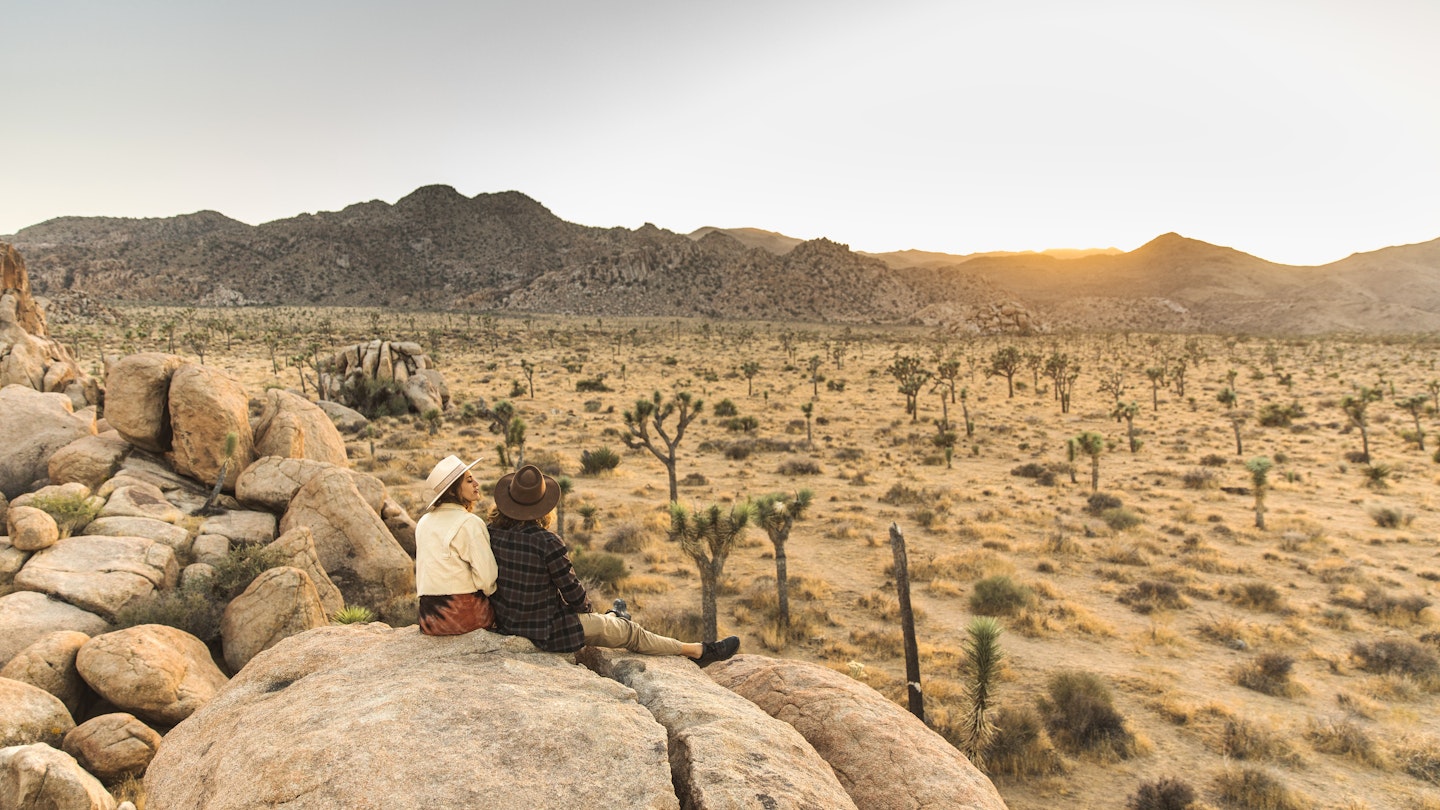Exploring Joshua Tree National Park: A Comprehensive Guide
What makes Joshua Tree National Park so memorable? It’s a blend of elegance, spirituality, and astonishing natural beauty. Nestled between the Coachella Valley and vast high desert of interior California, the park is easily accessible from the picturesque town of Joshua Tree as well as the lively Palm Springs.
The national park is where the Mojave and Colorado deserts converge, showcasing an eclectic ecosystem with striking succulent-filled fields, towering rocks eroded into captivating shapes, and groves of trees with spiky leaves. Visitors often remark that spending a day here feels like stepping onto another planet.
When Should You Visit Joshua Tree National Park?
As you might expect, summer temperatures in this desert paradise soar to triple digits, particularly from May through September. During this time, visitors may find better hotel deals; however, the heat can be dangerous. It is advisable to check the weather daily, sticking to outdoor activities during early mornings or evenings. Increased bee activity in summer can also make this season less ideal for those with allergies.
From October through April, expect peak season, particularly in April due to the nearby Coachella Valley Music and Arts Festival. While mixing live music with outdoor adventures can be exciting, lodging prices tend to climb. Fall, winter, and spring offer more pleasant daytime temperatures for hiking and climbing, ranging from the low 60s to mid-80s (F), although nighttime temperatures can drop sharply, particularly from December to February.

Recommended Duration for a Joshua Tree Visit
There’s ample desert beauty to enjoy for a week or more. However, if you are visiting Palm Springs and want to explore Joshua Tree, a day trip may be sufficient. Keep in mind that a day trip from Los Angeles can be ambitious, requiring 3 to 4 hours depending on traffic, making an overnight stay advisable.
If You Have One Day…
Hike the trails near the park’s west and north entrances, where you can experience the Mojave Desert. These regions are home to unique boulders and rock formations, in addition to the park’s iconic Joshua trees.
If You Have a Weekend…
With two days, you can explore both the Mojave and Colorado desert sections. While it’s impossible to experience every trail, you’ll have time for several hikes and scenic drives, as well as options for camping at one of the park’s 500 campgrounds, most of which can be reserved in advance.
If You Have a Week or More…
The California desert offers endless adventures. Hike through Joshua Tree, then consider visiting nearby spots like Tahquitz Canyon for a seasonal waterfall. You might also enjoy a day trip to Idyllwild, a charming mountain town, or explore unique attractions in the area, such as Pioneertown and the Noah Purifoy Desert Art Museum.

Getting Around Joshua Tree National Park
Getting in and around Joshua Tree is easy if you have a car. The park has paved roads, making it accessible, but public transportation is not available, and cell service may be limited. Ensure you arrive with a full tank of gas and plenty of drinking water, as there are no amenities within the park.
The nearest airport is Palm Springs International Airport, located 45 miles away.
Top Attractions in Joshua Tree National Park
Stroll Among Teddy-Bear Cholla Cacti
The Cholla Cactus Garden features a quarter-mile loop filled with cacti resembling the arms of teddy bears. While they may be visually appealing, it’s important to remember that these plants are quite prickly!

Scale the Monzogranite Rock Formations
The park features over 8000 rock climbing routes, attracting enthusiasts from all skill levels. For newcomers, hiring a guide is recommended for a safer and more enjoyable experience.
Explore a Historical Gold Mine
The Lost Horse Mine, once a thriving goldmine, offers a glimpse into the past with its ruins, artifacts, and scenic trails. The 4-mile out-and-back trail leads you through this historic site.
Stargazing Under the Milky Way
Joshua Tree is recognized as an International Dark Sky Place, making it ideal for stargazing. The park has designated areas with minimal light pollution for an unforgettable experience.

Final Tips for Your Joshua Tree Adventure
Prepare for Weather Variations
Pack layers for varying temperatures, especially in winter when daytime highs can reach 65°F while nights may drop to the 30s. Also, don’t forget a sizable water jug, comfortable shoes, sunscreen, and a hat.
Know the Park’s Hours
Joshua Tree National Park is open 24/7, allowing visitors to enjoy the beauty of the desert at all hours.
Budgeting for Your Visit
Your budget can vary widely depending on your plans, from luxurious accommodations to more economical campsites. While hotels and rentals in Palm Springs are generally pricier, options in Twentynine Palms offer better value.

Frequently Asked Questions about Joshua Tree National Park
Are some entrances busier than others?
The west entrance is the busiest, often experiencing long waits during peak times. Conversely, the north and south entrances near Twentynine Palms and Cottonwood Spring see fewer visitors.
Does the park have picnic areas?
Yes, there are multiple designated picnic areas throughout the park, perfect for enjoying meals amidst nature.
What should I pack for a trip to Joshua Tree?
Be sure to pack layers, ample water, comfortable hiking shoes, sunscreen, and a hat to protect against the sun while exploring the park.
This article was last updated on July 19, 2024.





